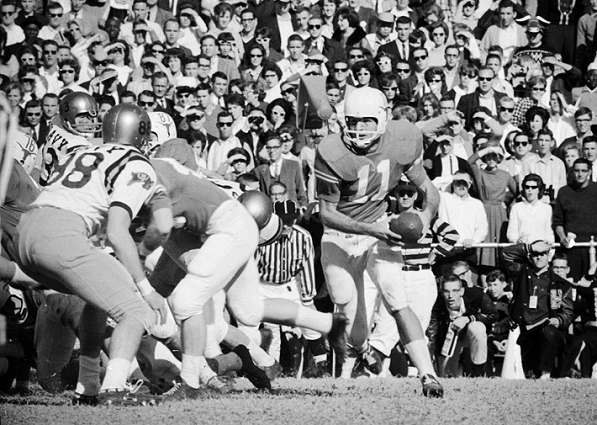


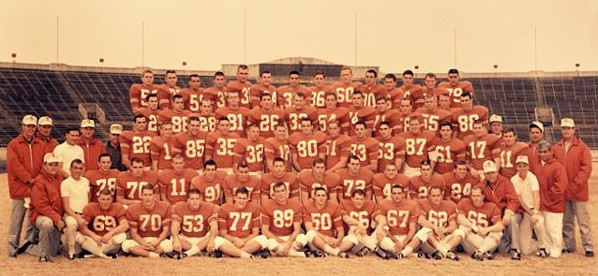
| at Tulane (1-8-1) | 21-0 | |
| Texas Tech (5-5) | 49-7 | |
| Oklahoma State (1-8) | 34-7 | |
| (Dallas) Oklahoma (8-2) | 28-7 | #11 |
| at Arkansas (5-5) | 17-13 | |
| Rice (6-4) | 10-6 | |
| at Southern Methodist (4-7) | 17-12 | |
| Baylor (8-3) | 7-0 | #19 |
| Texas Christian (4-5-1) | 17-0 | |
| at Texas A&M (2-7-1) | 15-13 | |
| Cotton Bowl Navy (9-2) | 28-6 | #2 |
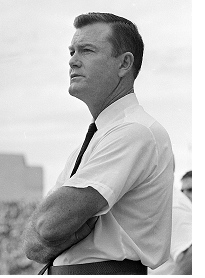 Texas had been ruling the Southwest from the beginning, and by 1963
they owned a winning all-time record against all of their conference
mates, as well as against archrival Oklahoma, but Texas had never won a
mythical national championship, while one organization or another had
awarded MNCs to Texas A&M, Texas Christian, Southern Methodist, and
Oklahoma over the years. So this was a breakthrough season for Texas in that regard.
Texas had been ruling the Southwest from the beginning, and by 1963
they owned a winning all-time record against all of their conference
mates, as well as against archrival Oklahoma, but Texas had never won a
mythical national championship, while one organization or another had
awarded MNCs to Texas A&M, Texas Christian, Southern Methodist, and
Oklahoma over the years. So this was a breakthrough season for Texas in that regard.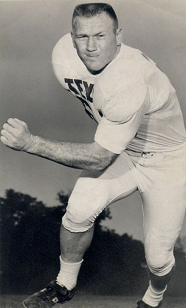
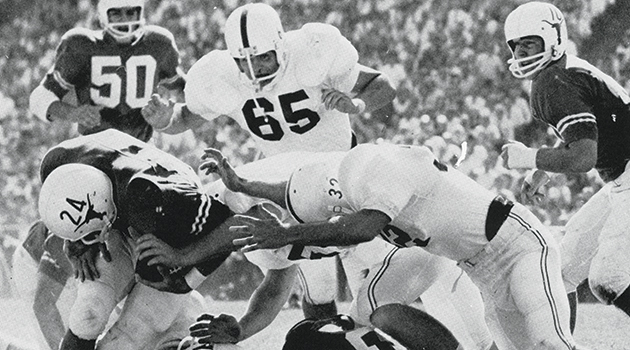
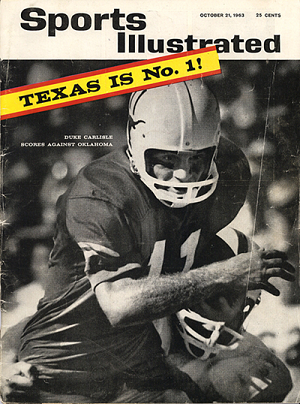
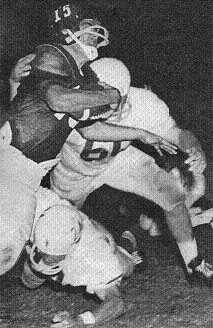
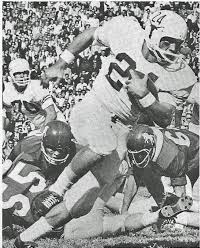
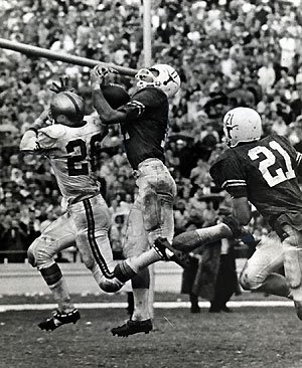
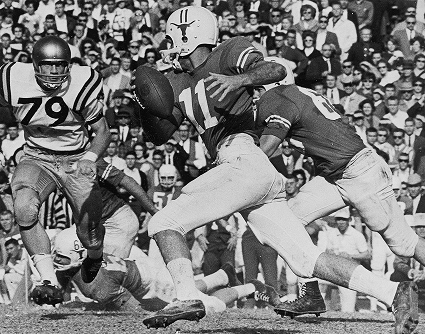
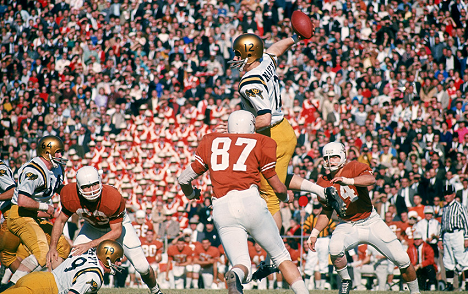
| 1) National Championship Foundation | 4.68 |
| 2) Billingsley (math system) | 4.66 |
| 3) DeVold
(math) |
4.62 |
| 4) Houlgate (math) | 4.53 |
| 5)
College
Football Researchers Association |
4.46 |
| 6) Sagarin-ELO (math) | 4.44 |
| 7) Litkenhous
(math) |
4.37 |
| 8) Poling
(math) |
4.36 |
| 9) Helms Foundation | 4.33 |
| 10) Boand (math) | 4.27 |
| 11) AP Poll | 4.23 |
| 12) Sagarin (math) | 4.21 |
| 13) Dunkel (math) | 4.20 |
| 14) Williamson (math) | 3.86 |
| 15) Berryman (math) | 3.30 |
| 16) Coaches Poll | 3.27 |
| 1) Boand (math system) | 4.26 |
| 2) College Football Researchers Association | 4.22 |
| 3) Poling (math) | 4.11 |
| 4) Helms | 4.09 |
| 5) Sagarin-ELO (math) | 4.06 |
| 6) National Championship Foundation | 3.96 |
| 7) Dickinson (math) | 3.49 |
| 8) Houlgate (math) | 3.35 |
| 9) Billingsley (math) | 3.34 |
| 10) Sagarin (math) | 3.28 |
| 11) Parke Davis | 2.77 |
| 1) Houlgate (math system) | 4.5 |
| 2) Helms | 4.3 |
| 3) Parke Davis | 4.2 |
| 4) National Championship Foundation | 3.7 |
| 5) Billingsley (math) | 3.6 |